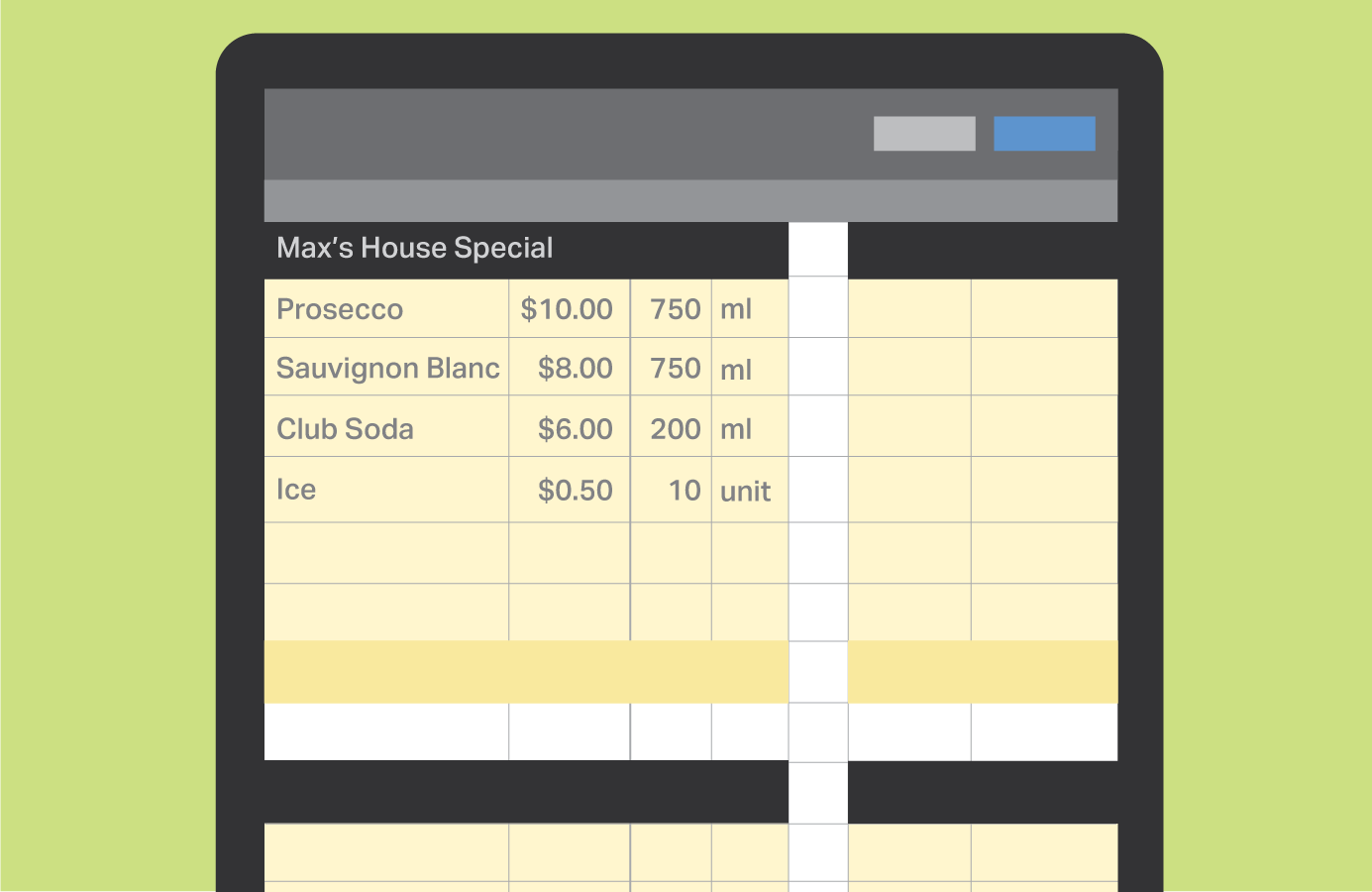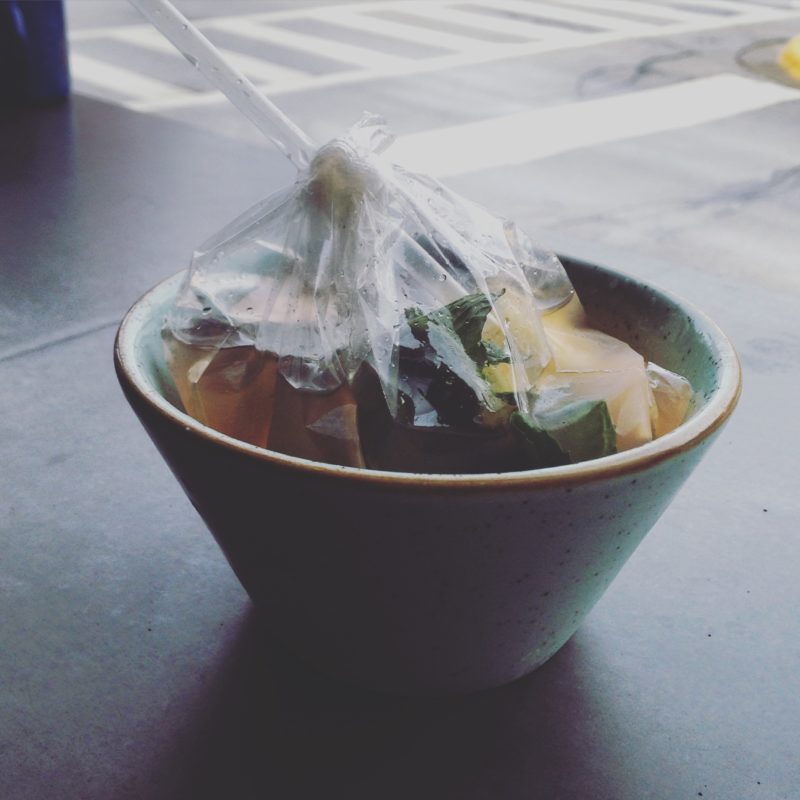


Especially when dealing with high volume, bars will often have to sacrifice either a cocktail’s quality or the ability of the bartender to get it out quickly. However, with the growing trend of large batch cocktails, the industry has found a method that helps to balance the two during the mad rushes of a service. But, how should you go about batching cocktails? How do you factor in their pour costs to the rest of your beverage program? And what problems might arise when you choose to batch cocktails?
To help you on your batching journey, we’ve released a new free cocktail spreadsheet to help track the profitability of your batched cocktails. We also chatted with a few industry professionals to get their insight into the practice:
Her favorite house batched cocktail:
Gin Street Girl
“A fantastic whiskey sour-type drink on our new menu. We make liter-sized bottles of the spirit mixture ahead of time, then keep just the mixture on hand for service. The batch itself is a combination of 3 different whiskeys—Belle Meade Single Barrel Bourbon, High West Double Rye and Slow & Low Rock and Rye—plus Maurin Quina, a French aperitif made from cherry brandy and white wine macerated with cherries and quinine. We only combine the non-perishable ingredients in a batch, then when it comes time to build the drink, we simply pour the right amount of the spirit mixture, cinnamon syrup and fresh lemon juice into a shaking tin. Super simple!”
On the trend: “I’m all for batching cocktails. Doing so has definitely helped our bartenders deal with the higher volume times. When making a drink with six or more ingredients, often over and over, it can get tricky and time consuming.”
On the benefits: “It’s helped us with bar organization by saving precious rail space. We have 40+ drinks on our menu, and finding a spot for every bottle needed for them can be difficult. Reducing the number of bottles on the rail means we can have more of our menu’s drinks within easy reach.”

His favorite house batched cocktail + recipe:
Teporocho (slang for “street drunk” in Mexican)
“Fill each plastic bag with 7 oz of the above mixture, along with a couple of pineapple wedges, a lime wheel and a sprig of mint. Tie the bag around a straw, keep chilled and serve within 24 hours of preparation.”
On the trend: “I believe batch cocktails are increasing in popularity due to the ever-increasing demand for craft cocktails, without sacrificing the speed or quality of service. Customers do not want their first round of appetizers hitting the table before their drinks arrive, and batch cocktails ease the load on the bar staff during service, allowing them to efficiently send drinks out into the dining room.”
On the benefits: “These cocktails require much more preparation, which I feel is invaluable to any veteran bartender or entry-level bar back. Through batch cocktails, I am able to teach my bar staff about the importance of taste.”
On the dangers: “Batch cocktails develop over time, and knowing how they develop is so important. For example, many sangria recipes call for steeping fruit. Well, what kind of fruit will work best with the flavors we have in the sangria? How much of that fruit should we steep? How long should we steep it? Should we remove the fruit after a certain period of time or not? Will the flavor profile improve with time, or will it peak and begin to decline thereafter? These are all very important questions.”
His favorite house batched cocktail:
Mr. Smiley Face
“It was a play on a Naked & Famous. It’s normally equal parts of mezcal, lemon juice, aperol and yellow chartreuse. I broke apart the equal parts, because it messed with the balance [of the batch]. But, I kept the same idea. Vida mezcal, aperol, a little Giffard apricot liqueur, FOS Greek Mastiha, a couple of dashes of grapefruit bitters and charred lemon juice. We would put that on a draft. It’s like, pop, put that in the coup, throw some dehydrated lemon on top, light it on fire if we have time and have some fun.”
On the trend: “I think batching is going to help restaurants be a lot more successful strictly for the fact that if you know how to cost a drink you are going to continuously do something very effective. You won’t have to worry about over pouring or inconsistency.”
His advice: “Do your research. Understand that there’s more science to it than just math. You really need to know that once you start going over a certain quantity, the ratios are going to start having to be tweaked. Understand how your bitters are going to affect it. Understand how your citrus works and oxidization affects it. Don’t cut corners. It’s not about that, and it defeats the purpose of batching. You’re trying to deliver a premium product and experience, just at a faster rate. You never want the guest to know that it’s batched.”
Need some help developing and pricing batch cocktails for your bar? Download our free batch cocktail template.
And keep it tuned into the blog by subscribing below.
Schedule 15mins to chat with a product specialist
Start a FREE Trial Today! BevSpot offers full product education and account setup for all customers! No card Information needed!
